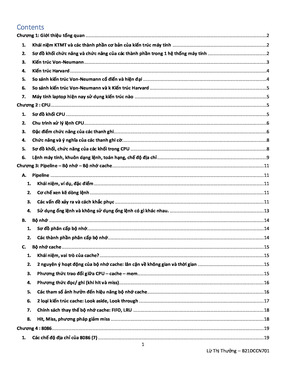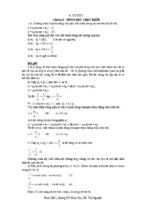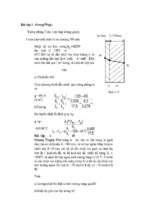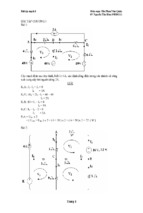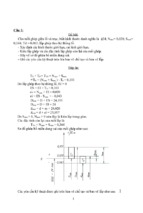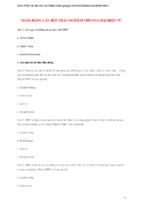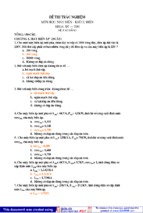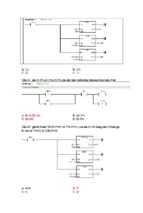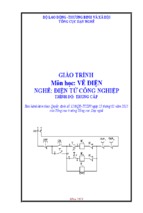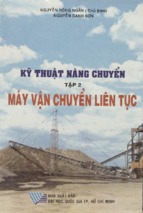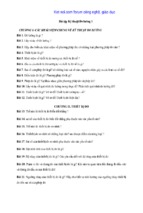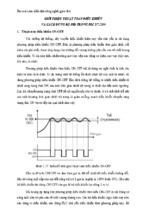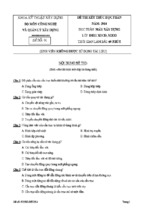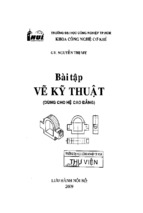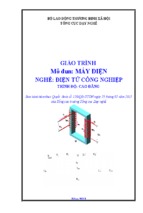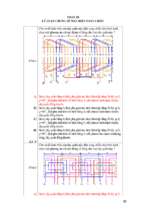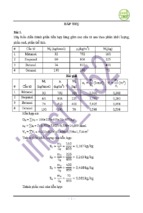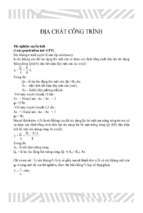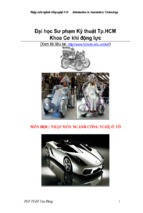MAST L.R THESIS OF MPPM
Anti-Corruption in
Construction Industry in Vietnam
Authors:
HOANG MINH TOAN
PHAM TIEU LONG
Supervisor: Prof. Dr. LARS TORSTEN ERIKSSON
Dr. NGUYEN CHl DZL NG
Class:
MPPM INTAKE I - Group 7
Hanoi, May-2011
l/f^
r'
UPPSALA UNIVERSITY (SWEDEN) &.
UNIVERSITY OF ECONOMICS AND BUSINESS, VNUH
MASTER PROGRAMME OF PUBLIC MANAGEMENT
Pham Tieu Long &. Hoang Minh Joan
!
ANTI-CORRUPTION IN CONSTRUCTION
INDUSTRY IN VIETNAM
Supervisor:
- Prof. Lars-Torsten Eriksson
Local Supervisor: - Dr. Nguyen Chi Dzung
Hanoi, May 2011
ABSTRACT
Title of the thesis: Anti-corruption in the Construction Industry in Vietnam
Level: Master Thesis for Master Program in Public Management
Authors: Pham Tieu Long, Hoang Minh Toan
Supervisors:
*
Swedish Supervisor:
Prof. Lars-Torsten Eriksson, PhD
Local Supervisor:
Dr. Nguyen Chi Dung PhD
Time of thesis presentation:
t
4
18/5/2011
Objectives:
In recent years, investments in construction have given rise to socio - economic
development, helping in providing jobs for people, improving the material and
spiritual life of the people. However, due to many reasons, corruption and
squandering are occurring in many construction projects. The increasing cases on
corruption in this sector has led to socio-economic losses. Therefore, prevention
and anti-corruption in construction industry are on the top priorities in Vietnam.
The objectives of this research are to provide an overview on corruption and anticorruption in construction industry, analyze and clarify the situation of
corruption in the construction industry in recent years, analyze the detection and
handling of corruption cases in the construction sector. Measures for corruption
prevention and anti-corruption are also included.
By studying theoretical issues of corruption in the construction industr\' and
analyze real cases of prevention and anti-corruption in the construction industry
1
in Vietnam and other countries, this study proposes recommendations relevant o
the current settings in Vietnam.
Research methodology:
- Analyzing the existing legal framework and system of legal documents for
prevention and anti-corruption in Vietnam.
- Compiling and analyzing data on corruption and anti-corruption in the
construction sector.
- Assessing and inferring in order to give relevant conclusions and
recommendations.
Results and conclusions
Construction sector has its own characteristics and those make it more prone to
coruption in many countries. Conclusions of the thesis include:
-
Coruption is high and difficult to prevent and combat in the construction
industry and the reasons for this partly come from its own characteristics.
This study shows a number of potential opportunities for coruption in
this sector.
-
Coruption is widespread in the construction industry in Vietnam.
Construction is among 10 most corrupted sectors in Vietnam.
-
Various measures for anti-coruption has been applied in the construction
sector but still alot of shortcomings. These include limited asset
transparency,
information
transparency, poor project
management,
complicated procedures for monitoring, detection and acusing coruption
crimes; inffective measures for promoting whisle blower; few coruption
cases are detected.
-
Prevention should be combined with combating coruption.
Recommendations
This thesis proposes recommendations for improving anti-coruption efforts such
as (i) Impose declaring personal assets focussing on positions with high risks of
corruption and randomly check as well as imposing disciplines against
violations; (ii) improving the role of civil society in monitoring and supervising
construction projects; (iii) simplifying the procedures for detecting coruption and
providing clear definition of corupted acts in Anti-Corruption Law and relevant
legal documents; (iv) improving the procedures for denouncing, with more
support, encouraging and protection for whisle blowers; (v) providing more
incentives to those who found coruption and; (vi) strictly dealing with coruption
cases.
Suggestions for further research:
Based on this research, the research team can study further about the mechanism
for detection and dealing with coruption in specialised construction areas such as
in transport, electricity and telecommunication. It may need to measure the
impact of anti-coruption efforts by surveys.
Key words:
corruption, construction industry, corruption prevention, anti-
corruption, detection and dealing with corruption, Vietnam.
TABLE OF CONTENTS
INTRODUCTION
2
CHAPTER 1: OVERVIEW ON CORRUPTION AND ANTI-CORRUPTION IN
CONSTRUCTION INDUSTRY
4
1.1. Definition of corruption
1.2. Characteristics of construction industry and corruption in construction
industry
4
1.2.1 Characteristics of construction industry and risks of corruption
1.2.2 Types and mane rs of corruption in construction industry
6
9
g
CHAPTER 2: CURRENT SITUATION OF CORRUPTION AND ANTICORRUPTION IN THE CONSTRUCTION INDUSTRY IN VIETNAM
13
2.1 An overview of corruption in Vietnam
13
2.2. The Construction Sector and Corruption
16
2.2.1 The Construction in Vietnam
16
2.3. Corruption prevention and combating in the Construction Sector in Vietnam 24
2.3.1 An Overview of the Legal System for Anti-Corruption
24
2.3.2. The reality of measures against corruption in Vietnam in the
construction industry
25
CHAPTER 3: EXPERIENCE OF OTHER COUNTRIES AND
RECOMMENDATION POLICY FOR VIET NAM
40
APPENDIX
50
REFERENCES Vietnamese documents (alphabe as in Vietnamese):
53
INTRODUCTION
Corruption has become a serious social evil in many countries in the world. It appears
and exists along with the establishment and development of a state as state is always
associated with the use of public power. The abuse of public power to serve personal
interests or misuse of public power of civil servants or state employees are always
serious risks to reduce the power and effectiveness of modem states. Conoiption occurs
in various forms and in all different aspects of society. That is why it requires
comprehensive preventive strategies, measures with different objectives to combat
against it (Klitgaard, et al 2000).
In Vietnam, the Communist Party and the State have identified as one of the foremost
missions at the top concern of the whole political system. The Anti-Corruption Law
was passed by the National Assembly at the 8'^ Session on 29/11/2005 and has come
into force since 01/6/2006. The Law was supplemented and amended on 04/8//2007.
Vietnam has approved the 'National Strategy on Corruption Prevention and Anticorruption upto 2020' as well as ratified the 'UN Convention against Corruption' on
30/06/2009. In the past few years, activities fighting against corruption-related crimes
in Vietnam have been carried out drastically. The prolong stmggle requires the
participation and effective cooperation of relevant government agencies. Up-to-present,
this struggle has gained certain achievements, which proves the proper viewpoint and
clear-sighted outlook of the Party and State of Vietnam on the problem.
In recent years, investments in construction in Vietnam have significantly contributed
to socio - economic development by providing jobs to a many people, reducing the
unemployment in society and improving the material and spiritual life of the people. In
the whole country, there are more than 900 state-owned companies in construction and
this figure in private sector is about 7000. Half of all construction companies have at
least 50 regular workers and a huge number of seasonal workers (Kenny, 2007).
However, many negative facts have arisen in management of construction investment,
resulting in considerable losses and poor quality of the civil wwks. The situation that
corruption in the construction industry^ happened with larger and larger scale in many
big projects has damaged not only the economy itself but also spoiled the belief of
people to the Government and State.
It is no doubt that corruption in the construction industry is a national disaster which
happens not only in Vietnam but in many other countries as well. It is like a kind of
"ultra virus" gradually gnawing the "body" of a country. Based on diagnostic data in an
overall picture of corruption in Vietnam, it shows that the construction industry is one
of the areas most prone to corruption (Davidsen, et al 2009). Therefore, we have chosen
the topic 'Anti-corruption in Construction Industry in Vietnam' for the research of our
master thesis.
The major objectives of the research are to provide an overview on corruption
prevention and anti-cormption in construction industry, focusing on analyzing issues
relating to detecting and dealing with corruption in construction industry and based on
the analysis and assessment of some specific cases of corruption, some
recommendations on anti-corruption will be introduced to managers in construction
industry and policy makers.
Besides the Introduction and Conclusion, our research including three main parts:
Chapter 1: Overview on anti-corruption in construction industry
Chapter 2: Current situation of corruption and anti-corruption in construction
industry in Vietnam
Chapter 3: Experiences of other countries in anti-corruption policy and
recommendations of policy for Vietnam
CHAPTER 1: OVERVIEW ON CORRUPTION AND ANTI-CORRUPTION
IN CONSTRUCTION INDUSTRY
1.1. Definition of corruption
Corruption is a social phenomenon associated with the foundation of social classes and
the establishment and development of states. Cormption happens in all countries in the
world without any distinction of the political system that the country follows and it
happens in all sectors relating to public management.
In the guidelines on anti-corruption of the US, definition of corruption is 'Corruption is
the abuse of public power to serve personal interest' V This definition is similar with
the conception of Klitgaard et all (2000) about corruption. The World Bank, in the
'Guidelines for Anti-corruption' (2006), has point out a series of actions which are
considered as fraudulent and corruption such as: offer, propose, give, receive, directly
or indirectly ask for any valuable things which may cause improper actions of other
partner, actions of collussion and complicity with other...In Vietnam 'Corruption is
abuse of public power to exert influence on people for undue benefits' and more
specific definition has been stipulated in the Law on Anti-Corruption passed by
National Assembly at the 8^ Session on 29/11/2005 'Corruption is actions of person
who have public position and power abuses their position and power when perform
their duties for undue benefits'. When carr>^ing out their tasks or duties, a person who
has public position and power can perform a lot of activities and actions with different
behaviours and actions, but only actions done by abusing their position and power for
personal benefits are considered corruption.
Those actions are stipulated in details in the Article 3 of Anti-Corruption Law which
defines corrupting acts (12 acts) as following: (1) properr>' misappropriation; (2) taking
bribes; (3) abuse of positions and powers to misappropriate propert>-; (4) abuse of
positions and powders while on duty and officials duties for interests; (5) misuse of
' See Handbook on fighting corruption'' - Center for Democracy and Go^emance. USAID, 1999
^ Vietnamese Dictionar>' - Nguven Nhu Y - Culture and Information Publishing House, 1988
powers while on duty and performing official duties for interests; (6) abuse of positions
and powers to exert influence over others to seek benefits; (7) fraud while on duty for
interests; (8) giving bribes, bribe brokerage made by persons with positions and powers
to handle the work of agencies, organizations, units or localities for interests; (9) abuse
of positions and powers to illegally use state property for interests; (10) initiate
harassment acts for interests; (II) failure to perform tasks and duties for interests; (12)
taking advantage of positions powers, for interests, to protect those who commit acts of
violation of law; unlawful interference in the examination, inspection, audit,
investigation, prosecution, trial and sentence execution for interests.
Before the Anti-Corruption Law, Penal Code Law 1999 stipulates seven articles
concerning corruption-related crimes: embezzlement of property (Article 278); taking
bribe (Article 279); abuse of positions and powers to misappropriate property (Article
280); abuse of positions and powers while performing official duties (Article 281);
misuse of powers while performing official duties (Article 282); abuse of positions and
powers to exert influence over others for the sake of interests (Article 283); fraud while
on duty (Article 284). To be considered as corruption, these crimes have to satisfy three
characteristics of the crimes of corruption, namely:
-
Corruption must be the behaviors/actions conducted by people holding positions
and powers.
-
When performing acts of corruption, the person wdth positions and powers take
advantage of their positions and powders to commit crimes.
-
Criminal acts of corruption must be interest-motivated.
In nature, corruption is a social phenomenon reflects such factors of a people, a country
as politics, economy, culture, tradition and life habits. The consequences of corruption
are not simply the economic damage with a huge amount of money but the more
important is it degenerates a part of state employees or civil servants, reduce the
efficiency of state management, spoil the belief of people, threaten the existence and
prosperity of a country. A clear and specific definition of corruption is very important
in issuing public policy, regulations on anti-corruption.
1.2. Characteristics of construction industry and corruption in construction
industry
L2.1 Characteristics of construction industry and risks of corruption
Many researches showed that corruption in construction industry is much higher than
other sectors . The scale and scope of corruption are different depending on the specific
fields and scope of building projects. Construction industry is the important sector in
economy development of many countries. It is estimated that market for construction
industry in the world is account for $US 4700 billions (in 2007)\ Contribution of
construction industry to GDP is about 10% in developed countries, 5-7 % in developing
countries and about 3-5 % in underdeveloping countries^
Why construction industry is the branch with high risk of corruption?
To find out the answer to the question, we need to consider the characteristics of
construction industry and point out the risks of corruption. Analyze the characteristics
of construction industry can also help us to find out the resolutions for anti-corruption.
+ Construction industry is the sector having many big projects with enormous capital
Even thought they have different sizes, but construction projects often have large-scale
plan required big capital, especially the projects with great investment capital from
government to develop infrastructure such as building high ways, harbours or seaports, airports, electricity plants etc. The capital for such construction projects is often
very large with the figures of from millions to billions US dollars. It is clear that it is
easier for the persons who are responsible for the construction of the civil works to hire
illogical costs or to fabricate the costs when implementing big projects than in projects
with small scale. This characteristics leading to the high risk of corruption.
+ The construction projects are often single and specific
^ See Transparency International (2003). "Global Corruption Report"
' Davis Langdon & Seah International (2008) **World construction 2007-2008"
'UNCTAD (2000) "Regulation and Liberalization in the Construction SerNices Sector and its Contnbution to the
Development of Developing Countries", Note by the UNCTAD Secretariat, TD^BCOM. 1/EM. 12/2,
12 September 2000.
In construction, each product has its own design with specific estimated costs for the
product as each product requires specific technology, convenience, art, beauty and
safety. That is why we can not produce a series of products with the same appearance
and features. Products must be manufactured or designed based on specific technical
specifications from the investors. It is difficult to compare the construction work due to
their single characteristics. Therefore, it is also not difficult for the person responsible
for carrying out the constructions to raising the costs for building or hiring under-table
cost to server the personal benefits. There are not so many big projects so the bidders
are ready to give a bribe to receive the contract to reach their company's annually plan
of benefits or sale income.
-+- The important roles of State and Government to the infrastructure projects
Most of projects to building or upgrading the public infrastructure are belong to the
State. Even the projects implemented by private companies need the approval from
public agencies. Construction industry is the sector has to follow quite a few legal
regulations of the Construction Law applied at all levels from the central to the local
ones with so many licenses. This is also high risks of corruption.
+ Construction activities relating to many bidders/suppliers:
A construction project can have hundreds of bidders/suppliers. There are many such
opportunities for corruption in a construction project as the way the investors/ project
management unit (PMU) dividing the bidding packages, selecting bidders, recognizing
the work that suppliers has been done and completed, speed up the liquidation... Each
activity can be exploited for corruption.
+ Construction project often includes many phases requiring complex technology those
are difficult to effectively supervised
Normally, a construction project is divided into many phases with different requirement
of technology and the way to manage the activities in each phase is difi*erent. Event
thought the PMU signs a packaged-contract with a main bidder/suppliers for the whole
construction work, they often sign sub-contract with sub-suppliers to provide serx^ices
and/or goods for small bidding package. This also leading to difficulty in supervising
both the construction activities and discovering the corruption.
The technology applied in a construction project is often complex, including both
underground and on the ground parts. Insufficient information make the work of
supervision to be more difficult and even the experts sometimes have different ideas
about the cost or issues raising. Bidders/suppliers can blame the fault on the third party
and still required payment on time even when they have not correctly followed the term
and conditions in the contract. This is the stage the corruption can happen when the two
parties negotiate about the causes and effects of raising issues or about the work has
been done and completed for payment or compensation.
Most of parts of a construction work are covered by other part. For example, steel
structure of a pillar is covered by concrete or brick, metal frame is covered by tiles or
roof etc. Therefore, it is difficult to ensure that the construction is done exactly as it is
designed and it is also very difficult to assess and evaluate the real quality of the parts
hidden behind the covers despite of the fact that the supervision work is done by an
independent supervisor.
+ Secret culture and local characteristics in construction industry
To succeed in bidding, most of information relating to the real cost for the construction
work is keep secret. Construction is not the land where the information is public and
clear. Moreover, not all the construction work are comprehensively audited and
inspected to find out the fault or corruption. It is very difficult for external enterprises
to be successful in bidding of a local project or national project. Foreign enterprises
must often accept to give big commission if they want to be the suppliers of a local
construction project.
-I- Construction relating to many professional societies, therefore, lack of a unique
organization responsible for construction field.
The complexity of construction work requires the participation of labour of many
different fields such as civil engineers, architectures, accountants, laNNyers, electrical
technicians, workers. Each field often has specific regulations on conditions for
8
practicing the professionals etc. That why it is difficult to fmd a unique organization
responsible for construction field.
1.2.2 Types and manners of corruption in construction industry.
Corruption in construction industry can be seen at all phases of implementation of an
investment project: From the phase of making master plan, preparation for investment,
implementation of the project (e.g. bidding, selecting the bidder, construction ...); pilot
running, hand over and bring into practice, warranty, maintaining and repair (if any)
Construction enterprises often try to find out the way to give bribes to responsible
person of the project to be the supplier for the construction even when the project just
starting with the phase of making plan for implementation or making an unnecessary
project just to have opportunity to improve the turnover and/or benefits.
The more complex the approval procedures is, the more opportunities for corruption
occurs.
Using bribes to have a contract of construction is a popular corruption form. Bidders try
to give bribes via a neutral party, joining with local company which has relation with
the stakeholder, or more sophisticatedly, via the sub-contractor (the main contractor
sign the sub-contract to provide services or goods with the sub-contractor which is the
local enterprise having relationship with the stakeholder. In fact, the money has been
paid but no services or goods have been provided or in other cases, goods or services
have been provided but with much higher price in comparison with the price in the
market and the balance is one of the corruption types).
Risks and types of corruption in construction industry- in Vietnam are listed in the Table
1 below:
Table 1: Ricks and corruption t>pes in construction industr\' in Vietnam
Phase in a
construction
projects
Developing masterplan (design,
appraisement and
Risks and t)pes/forms of corruption
. Select the project for purposes of personal interest instead of for public
interest
- Limitation of stakeholders/relevant parties participating in the
approval)
procedures of making decision
'
- The end-users or affected parties are not consulted or involving into the
progress of project planning
- Approval process is not clear or erroneous because of comiption
Recognition/ project
design
- Design the project for personal interest instead of public interest
- Limitation of stakeholders/relevant parties participating in the
procedures of making decision
- Project is impacted by the enterprise
Identified the
- Improper unit-price stipulated by the state
specifications and
budget
- Inaccurate budget, unstable market price, improper consultation
- Designing consultant giving unnecessary consults for commission
- Collusion between the designer and appraisement officer
- Bias towards specific bidder
estimation/budget
planning
Appraisement
- Unindependent appraisement officers
- Overpower of authority, making improper decision
Administrative
procedures relating to
construction
- Complicated procedures of approval and giving license create risks of
unofficial costs
Land clearance and
resettlement
Occupy the state-owned land in local area
Improper or unreasonable compensation price
Make up affected list of compensation to get money
Bidding
- Collusion between the investors and appraisement party
- Collusion among bidders to push up the price higher than market price
- The bid winner who receive the contract is not the good bidder
- Lack of competition because of limitation of suppliers
- Long bidding procedures causing the delay in implementation of
important projects
Implement
- Project Management Unit (PMU) abilit\' in managing project does not
meet standard requirements
- Limited ability of bidders/suppliers. PMU does not have proper
methods or measures to deal with ineffective and inefficient operation of
bidders.
- Collusion between design consultant, implementation consultant and
supervisors
- Intended violation the initial design, adjusting contract (e.g. price,
specifications)
construction project
(Quality
management,
management of
progress,
management of
construction work,
management of safety
and environment)
Hand over the project
The difference between completed products and design
to investors and
Financial cheating
Unclear in technical assessment and design before approval
persons who making
10
the decision in the
investment
Liquidation and audit
- Lack of assessment and evaluation after the project/final product being
brought into practice
- Collusion between auditors and contractors/suppliers in audit reports
- Liquidation for expenditures of nothing or expenditures with price
exceeded the cost norm
- Complicated liquidation making opportunities for corruption
1.2.3. Influences of corruption in construction industry on the country economy
Construction industry play an important role in country economy, but it is also the
sector/fields having high Ricks of corruption. The impacts of corruption in construction
industry including:
+ Corruption makes the investment capital increase and waste the state budget
It is difficult to compare investment budget among the projects; therefore, the cost for
infrastructure can increase because of corruption.
Due to the characteristics of construction work, it is difficult to compare investment
capital among the projects and this may leading to the increase of capital because of
corruption. The increase investment capital for this project because of corruption
resulting in reducing the investment for other projects. For example, if the possibility of
corruption in building new high way is higher than the maintenance of the old ones,
there will be situation in which the investment capital for new high way will be given
priority, leaving the old ones in the backward conditions. This is popular situation in
African countries (Collier and Hoeffler, 2005)^ The authors pointed out that, after the
implementation of anti-corruption in construction campaign, the investment cost for
projects of infrastructure construction reduced from 40-50 % compared with the cost
before.
Research of Henisz (2002) in investment on infrastructures of telecommunication and
electricity in 100 countries in the world shows that corruption has sigmficant impact on
investment cost. The extra-cost because of corruption in construction of infrastructures
' Sec Transparency International (2005). " Global Corruption Report
11
in Afi-ican countries strongly reduces the ability to construct new telecommunication
system in those countries^.
+ Corruption increase the running cost of infrastructures system and reduce the quality
of infrastructure works
In many countries (including Vietnam), the operation of infrastructure systems such as
electricity, water, harbour etc is belong to sole organizations/institutions. Corruption
make the quality of services become lower and lower and raising the running cost. The
exclusive agencies can exploit their advantages to pay higher salary or require extrapayment when providing the services. Consequently, customers have to pay higher
price for the services they receive.
A research on infi-astructure services of the World Bank in 412 cities in 134 countries
about the opportunity and quality of clean water, telephone and electricit>' shows that
corruption has strong impacts on the opportunity to access and quality of those
services . The corruption also reduces the opportunity to access other public services of
the people, especially The Poor.
+ Corruption in construction industry also reduces the growth speed and makes the
budget deficit of the state become more serious. Cost for construction of infrastructures
increases, but the quality is bad leading to, of course, the low economic growth.
+ Corruption of construction industry threaten the environment
With the need of building more hydro plants in many countries to increase the
electricity production and regulate the natural water, the existence of corruption will
lead to many issues relating to envirormient. In the Global Corruption Report of
Transparency International Organization (2005), the authors pointed out that, because
of corruption, many projects for building hydro plants had not been considered and
assessed comprehensively about the impacts of the plants on the surrounding
environment as well as not satisfied the requirements of environment protection during
' See Henisz W.J (2002) '*The institutional environment for Infrastructure Investment" in Industrial and
Corporate Change , No 11.
* Kaufmann D. , Leautier F. and Matruzzi M. (2004). " Governance and the City : an empirical mvesugauon
into the global determinant of urban performance" . Mimeo ( World Bank).
12
the construction. Some examples of those are hydroplane project in Bujagali (Uganda),
Jatigede Dam (in Indonesia), Yacyreta Dam (in Paraguay).^ Those projects had also
not brought in the economic benefits as expected because the corruption made the cost
for construction increased and, at the same time, causing a lot of environment
problems.
+ Corruption causing the instability of the society
Governments in many countries collapsed because of people's strong reactions to
terrible situation of corruption of Government officers. That is the case of Suharto in
Indonesia; Marcos in Philippines and recently, the government of Mubarak in Eg>*pt.
It can be said that the long lasting of corruption in construction industry in particular
and corruption in general causing the reduction of people's belief in the government,
the authority and that is the root of social instability.
In summary, corruption in construction industry is one of the challenges that many
countries have to face with it. Corruption in construction industry causes a lot of
negative impacts on the fields of economy, society and environment of many countries.
The characteristics of construction industry make the prevention and anti-corruption
dealing with a lot of difficulties even in developed countries. As a developing country,
Vietnam has been also facing with corruption in construction. In the next chapter, we
will analyze the situation of corruption in Construction industry in Vietnam.
CHAPTER 2: CURRENT SITUATION OF CORRUPTION AND ANTICORRUPTION IN THE CONSTRUCTION INDUSTRY IN VIETNAM
2.1 An overview of corruption in Vietnam
Corruption is undoubtedly one of the most serious challenges faced by Viemam. The
long-term pattern of development will very^ much depend on the government' s abilit>to tackle it, and to overcome it. Vietnam is often portrayed as a widely corrupt countr\'
' See Bosshard P. in Transparency International (2005). *' Global Corruption Report'
13
in cross-country surveys, e.g. Transparency International' s (TI) Corruption Percepti
ion
Index ranks Vietnam 116 among 178 countries and territories.
PERC2010
9,2
9,5
9,2
United Kingdom
7,6
6,8
7,4
7,7
8,2
30
Israel
6,1
5,1
5.8
6
6
39
Korea (South)
5,4
6
5,1
4,7
5,8
50
Hungary
4,7
5,6
6,8
5,8
2,3
78
Thailand
3,5
3,9
3,3
3,4
4,4
91
Sri Lanka
3,2
3,1
3.3
3,4
105
Argentina
2,9
3,5
3,3
2,6
3,6
no
Indonesia
2,8
3,5
1.9
2,6
4
116
Mozambique
2,7
2,3
3,3
2,6
172
2Ti
2,3
4,8
5,6
WEF2010
8,9
20
WB 2009
IMD2010
9,3
FH2010
Denmark
1
BF 2009
GI2010
EIU2010
ADB 2009
Table 2: Ranking of transparency and quality of governance 2010
4.6
3,7
3,3
3,3
2.7
4,1
2,4
1,9
3
2,7
3,3
2.7
2.6
2,6
2,7
2,7
m m^
2,7
1
23
123
Armenia
2,6
2,3
2.3
134
Bangladesh
2,4
4
3,1
1,9
2,1
2.7
1,8
143
Pakistan
2,3
2,3
1,8
3,3
2,1
2,1
2,4
154
Russia
2,1
2,3
1,9
164
Venezuela
2,0
1,5
1,9
172
Turkmenistan
1.6
1,8
176
Myanmar
1,4
0.9
2,9
2
1,6
1.9
1.4
2,1
2,6
2,1
2
2,3
1,4
1.4
(Source: Transparency International. 2010)
ADB: Country Performance Assessment Ratings by the Asian Development Bank
AFDB: Country Policy and Institutional Assessment by the African Development Bank
BF: Bertelsmann Transformation Index by the Bertelsmann Foundation
EIU: CounU7 Risk Service and Countr> Forecast by the Economist Intelligence Unit
FH: Nations in Transit by Freedom House
GI: Global Risk Service by IHS Global Insight
IMD: World Competitiveness Report by the Institute for Management Development
PERC: Asian Intelligence by Political and Economic Risk Consultancy
NV'B: Country' Policy and Institutional Assessment by the World Bank
WEF: Global Competitiveness Report by the World Economic Forum
14
2.7
goer fdi)
.*tn«m iH r>nt rtv
thi
r„ - t.
r«ici* issue.
i
cine such
'
• i"(
. <
portray Vietnam as iMMHiat in this respect because k has higher niridng than
lighor level of Atvelopmefit sncli as Russia. Vietnam's indices on transpareacy and
cv inpetitiveness ase slightly highvlban that of South Asian countries SHkasn PMislBn
aad Bangladesh. But the reality on the ground is more complex. The World Bank* s
inrraalment Climate Assessments, on the other hand, put Vietnam on a par with
Malaysia, one of the least corrupt coimtries in the region''. When taking into account
GDP per capital as the comparing basis, the extent of corruption is actually comparable
to that of other countries at a similar development level (see Figure 2). The level of
corruption is closely linked to socio-economic development and most developing
countries are facing this problem.
Figure 1: Integrity and GDP per capita
3
2.5
i
1
1,5
7
?
1
I
0.5
12
I -0.5^
\
-1
•
ConibSdij
o
»-1.5
•2
GNI per capita (ln| for 2007 (WB, Atlas Method)
Sources: World Governance Indicators 2007 and World Development Indicators 2008
index: therefore, the reference and paraphrase
'^ There are difference ideas about administi^tive quality measure ii
^
. - r.nrr.
must be very carefully. See Amdt. C. and Oman, C. (2006): ^'Uses and abuses of governance md.cators Centre
for Research and development, OECD. Pans
„, .„ri.P..ir%e%s
" See Survey on Investment Environment of the World Bank at b i m www entcrpnsesuQm
15
al
- Xem thêm -


